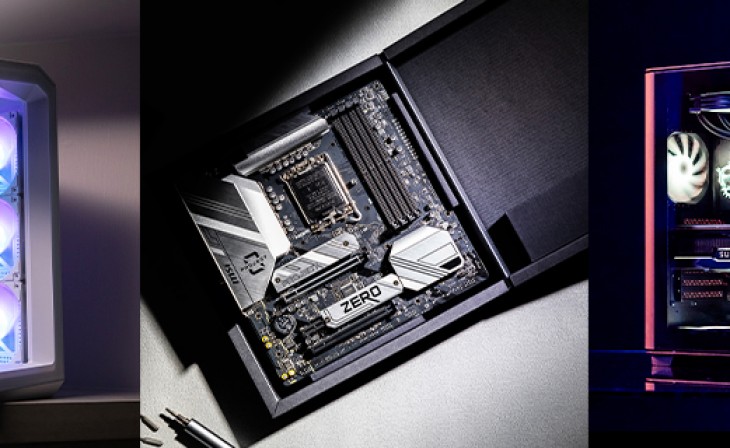The Rise of Motherboards with Hidden Connectors: A CES 2024 Trend
While it's always possible that a year from now, motherboards with rear-mounted connectors will have faded into obscurity, the current landscape at CES 2024 suggests otherwise. These motherboards, designed to hide all the cables and connectors on the rear, have the potential to become a significant development in the world of PC building.
Also check The Best Laptops of Early 2024: A Comprehensive Guide
Unveiling the Concept: MSI's Back-connect and Asus' BTF
The motherboard landscape is witnessing the emergence of a concept known as the "motherboard mullet," where the front is for aesthetics, and the real business happens at the back. Two prominent players in this space are MSI with its Back-connect and Asus with the rather creatively named BTF (Back-To-The-Future). While one of these names may have a better chance of mainstream adoption, the concept itself holds promise.
Both MSI and Asus initially introduced these concepts at Computex 2023, but at CES 2024, these motherboard ideas have garnered more attention from PC builders, case manufacturers, and PC component companies.
The Evolution of PC Builds: MSI's Back-connect Showcase
To understand the significance of this trend, let's take a closer look at MSI's Back-connect showcase at CES 2024. MSI has presented a series of PCs built around Back-connect motherboards, demonstrating the concept's potential impact. Notably, two of these PCs are MSI's own designs, known as the Project Zero ATX Showcase. Additionally, Maingear, a renowned player in the PC building industry, has embraced the Project Zero boards by incorporating them into their builds.
Maingear's contribution to this showcase is particularly interesting, as they have utilized Project Zero boards in combination with either MSI or Phanteks compatible cases. This collaborative effort underscores the versatility of the Back-connect concept, as it seamlessly integrates with different case manufacturers' designs.
The Significance of Motherboards with Hidden Connectors
The emergence of motherboards with concealed connectors and cables on the rear is a noteworthy development in the PC building world. In this section, we will delve into the implications, advantages, and potential challenges associated with this trend.
Aesthetics and Cable Management
One of the primary advantages of motherboards with hidden connectors is the enhancement of aesthetics. By concealing cables and connectors on the rear side of the motherboard, PC builders can achieve a cleaner and more visually appealing front panel. This can be particularly attractive to enthusiasts and gamers who value a sleek and organized appearance for their setups.
Enhanced Airflow and Cooling
Improved cable management can also lead to better airflow within the PC case. With cables neatly tucked away at the rear, airflow restrictions caused by tangled wires are minimized. This, in turn, can contribute to more efficient cooling, potentially boosting the overall performance and longevity of components.
Ease of Installation and Maintenance
Motherboards with hidden connectors can simplify the installation process for both novice and experienced PC builders. By eliminating the need to route cables through the front, these motherboards make it easier to access and connect components. Additionally, maintenance and upgrades become more convenient, as connectors are readily accessible at the rear of the motherboard.
Potential Challenges and Considerations
While the concept of motherboards with concealed connectors offers several advantages, it's essential to consider potential challenges and limitations. These may include:
-
Compatibility with existing cases: Adapting existing PC cases to accommodate rear-mounted connectors may require modifications or the purchase of specific cases designed for this purpose.
-
Component accessibility: While rear connectors enhance cable management, they may limit access to certain components, such as M.2 slots or RAM sockets, depending on the motherboard layout.
-
Manufacturer adoption: The success of this trend may depend on how many motherboard manufacturers adopt and refine the concept, ensuring a wide range of options for consumers.
The Future of PC Building: Anticipating Mainstream Adoption
As CES 2024 highlights motherboards with hidden connectors as a compelling trend, it's important to recognize the potential impact and benefits this concept brings to the world of PC building. The aesthetics, improved airflow, ease of installation, and maintenance advantages make it an exciting prospect for both enthusiasts and newcomers to PC building.
While there may be challenges to overcome, such as compatibility issues and component accessibility, the industry's response to this trend at CES 2024 suggests that motherboard manufacturers are exploring its potential. With ongoing refinement and greater adoption, motherboards with concealed connectors may become a standard feature, ushering in a new era of PC building aesthetics and functionality. As we eagerly anticipate the evolution of this trend, it's clear that innovation in the PC building world continues to push boundaries and redefine the possibilities for gamers and enthusiasts alike.




